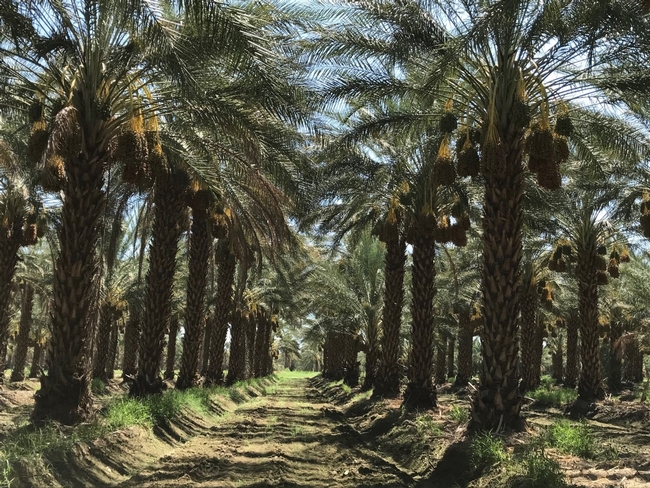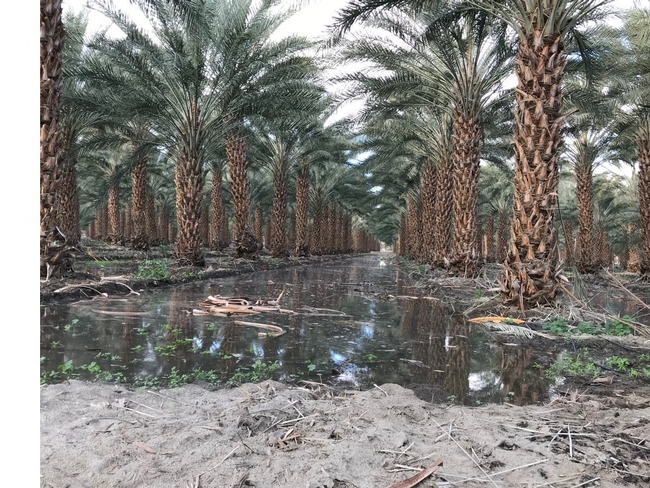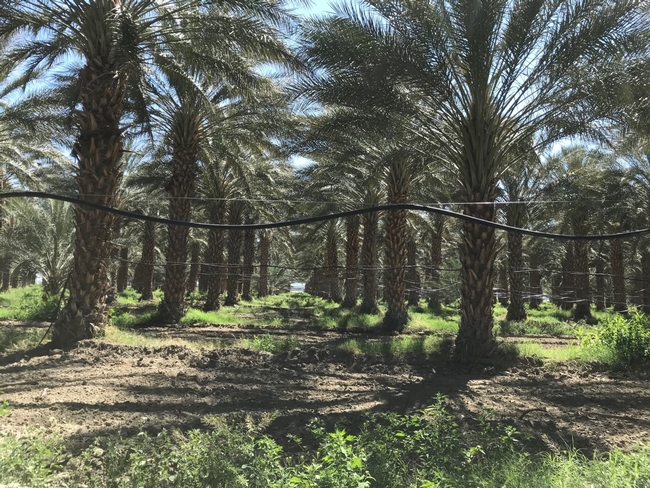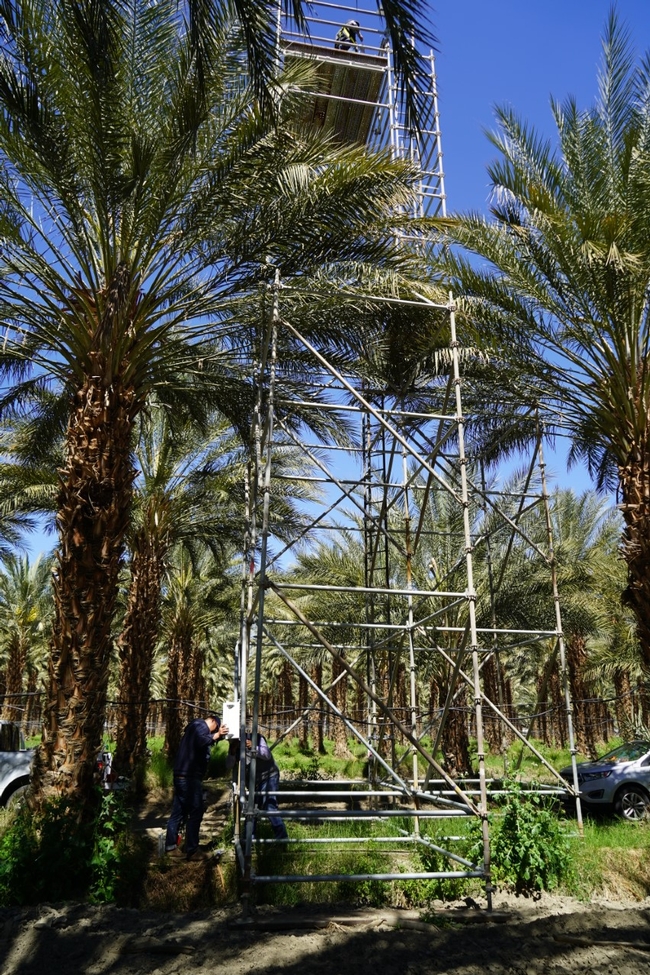The dates are among the world's oldest cultivated fruits, widespread throughout North Africa, the Middle East and Southern Asia. Over the last century, distribution has extended to the United States, South Africa, India and Australia. In general, the geographical distribution of commercial date production is limited to areas that can be described as arid and semi-arid and where there is abundant water supply. The best date palm growing regions are characterized by long, hot, dry summers with minimal summer/fall rainfall. In other words, long, hot and arid growing season is required for date palm growth and to develop, mature and ripen fruits. Early maturing varieties such as Mejhool and Deglet Noor in the California low desert, require about 6,500 degree-days of heat units from flowering to fruit ripening.
The low desert region of California is the major production area of date palm in the United States with an area of nearly 10,000 acres (2017 Riverside County Agricultural Production Report and most recent Crop Acreage Report of Imperial Irrigation District). The Coachella Valley date orchards represent about 85% the total date palm acreage in California and the remaining 15% is in the Imperial Valley. The California date industry is booming, and production is expected to continue to increase as many new date palms are planted in recent years and/or are under planting.
| Figure 2. Mature date palm irrigated by flood system in Thermal (left), and date palm equipped with drip irrigation in Coachella. | |
Despite date palm's regional and international importance, and its dependence on irrigation or a shallow water table for survival, relatively little research has been conducted on the water relations and irrigation needs of date palm worldwide. The lack of accurate crop water use information, along with the viability of micro irrigation, are the largest uncertainties facing date palm growers in the California Low Desert. Although date palm growers have started to adopt micro irrigation, in many instances, irrigation is based upon data developed decades ago in flood irrigated orchards. Both micro/drip and flood (border) irrigation are common practices in the region, even though growers who have developed micro irrigation systems in their groves prefer to irrigate their palms through an integrated micro-flood irrigation over the season.
Utilizing drip irrigation, along with more accurate estimates of crop water use and irrigation scheduling in date orchards, may have a significant impact on water quality issues in the Salton Sea and on soil water availability, potentially increasing the economic sustainability of date production. Development of this information will enable growers to more efficiently utilize water and nutrients and to achieve full economic gains from their orchards.
The good news is that we received a grant from CDFA 2018 Specialty Crops Block Grant Program to address date palms' irrigation management related issues. The main objective of this project is to develop and disseminate information and user-friendly tools for best irrigation management practices in California date palm. A group of scientists from UC Agriculture and Natural Resources' UC Cooperative Extension, UC Davis, USDA-Agricultural Research Service, USDA-Salinity Lab, and the California Department of Water Resources are collaborating with this project.
| Figure 3. One of the monitoring towers established in a commercial date palm in Thermal (left picture taken by drone), and a close view of the tower (right picture). | |
To conduct the measurements, we established six monitoring towers in six commercial date palms in the Coachella Valley (Thermal, Indio/Coachella) and Imperial Valley (Westmorland and Winterhaven). Different aspects were considered to select the experimental sites, including soil type, orchard canopy feature, irrigation practice, salt affected, and non-salt affected orchards, and date variety. Since April 2019, we started comprehensive data collection using combined cutting-edge ground- and remote-sensing technologies. In each monitoring station, thirty different sensors were installed above tree canopies and in the soil to measure various parameters, including actual crop water use (evapotranspiration), weather data, canopy temperature, soil moisture in the crop root zone, and canopy greenness. The data collection will continue over a two-year period along with several drone fly-overs and soil salinity surveys. The preliminary results of this ongoing project will be published in the next few months.




